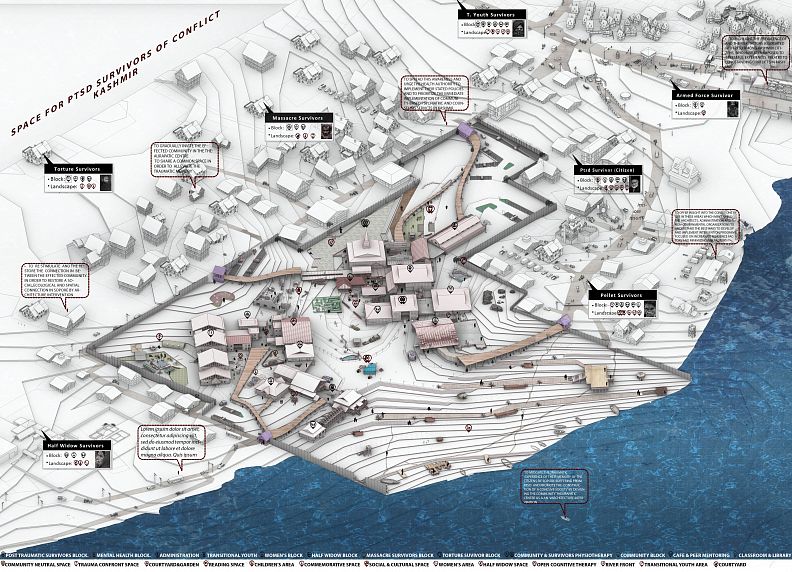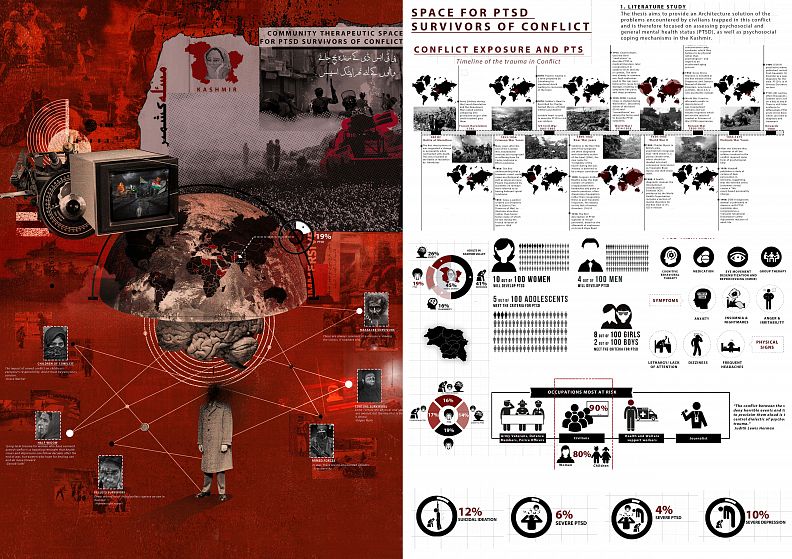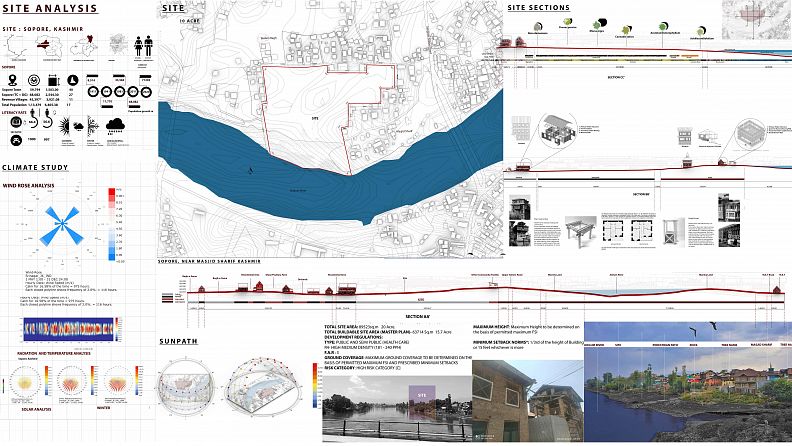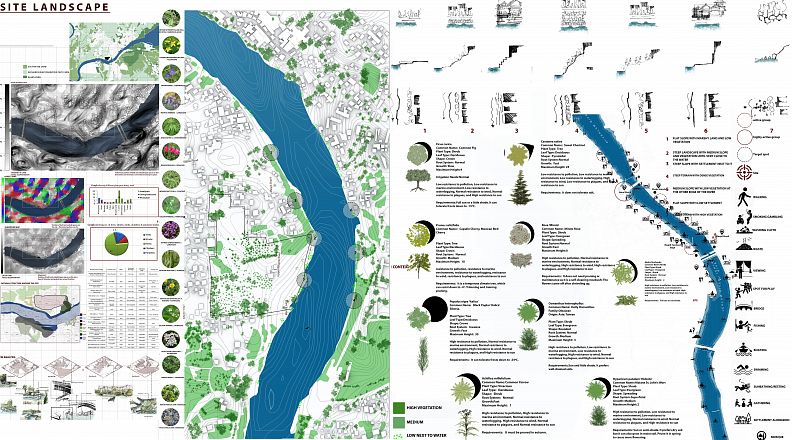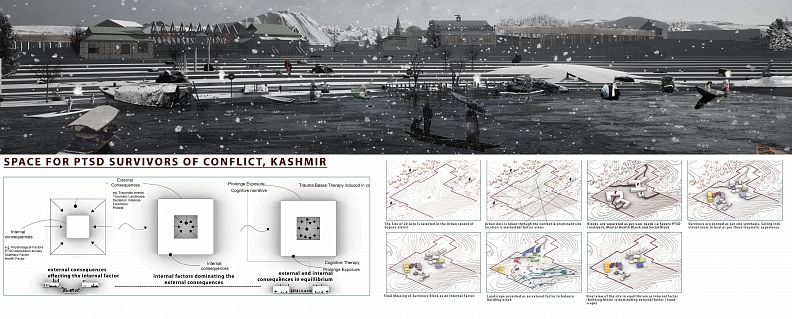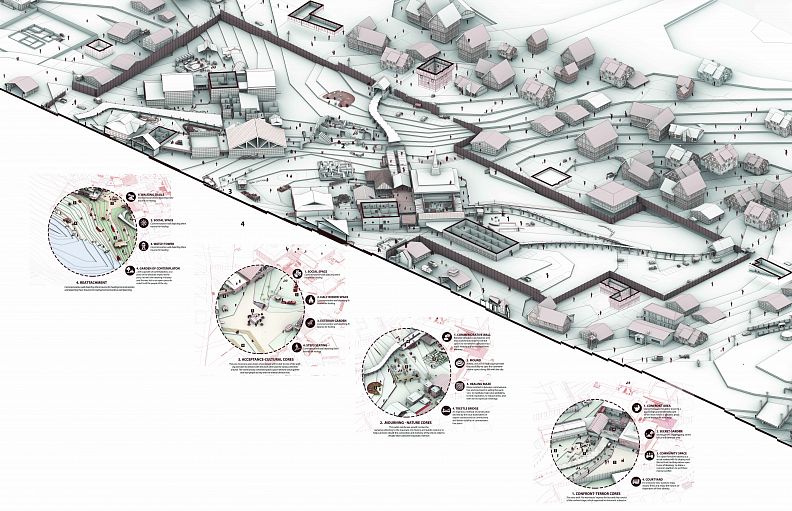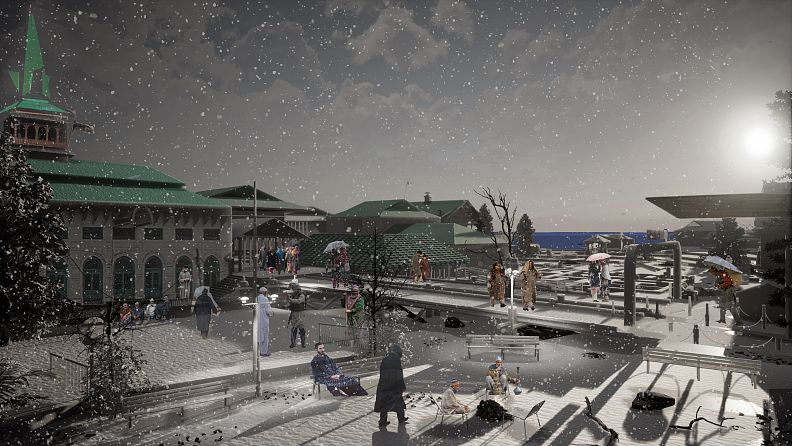SPACE FOR POST TRAUMATIC STRESS DISORDER (PTSD) SURVIVORS OF CONFLICT, KASHMIR

Project idea
The projects aims to mitigate the traumatic experience of their memory of the citizens of Sopore, Kashmir suffering from PTSD and promote the construction of a cohesive society by designing the community space for PTSD survivors of conflict as a an architecture intervention.
Project description
Throughout the course of world history, wars and post traumatic stress disorder always has a direct relationship as they are influenced by multiple external factors which forms a complex web in that region, thus direct or indirectly effecting an Individual milieu internally in terms of PTSD. Today, unfortunately, they are many, which are raging around the globe, for example in Syria and Somali Palestine, Mexico, Iraq Kashmir etc. which are effected by Post war in terms of PTSD. How is post-war chaos producing PTSD managed in an Urban context which in itself has an Traumatic Landscape directly or indirectly effect an Individual. What will be imprinted on to the residents’ memory in terms of Trauma and what will pass into oblivion? Understanding the architect’s deep influence on the shaping of life , these questions swirl in my mind and thus raising the indicator of responsibility in a Post traumatic Urbanism .
The site selected is in Kashmir, Baramaulla Sopore where the 26 % of the population suffers from PTSD, largest in India. Different survivors have different Traumatic memory (social political ethnic religious), thus forming a complex web of mental conflict over one another. The thesis aims to bind them together in form of a collective memory in an urban space without having any conflict over their personal traumatic memory. The multiple sets of people suffering from PTSD are further classified based on their collective trauma i.e. Massacre, Torture, Half Widows, Transitional Youth and Armed Forces combat Survivors. The survivors are thus further classified based on Severe Individual PTSD (Rehabilitation & Treatment) and Urbanism PTSD (Treatment) inducing Cognitive therapy in its built block and Prolonged Exposure therapy in its Landscape based on their trauma categorization. The user as an internal factor is dominating over the external factors i.e. Landscape which is vice versa in its context. Thus an order is created as an equilibrium over a complex web of mental conflict created to a specific user therapeutic needs and trauma experience in order to not affect them mentally when they get back to their Traumatic Urbanism.
Technical information
• To demonstrate the significant role of conflict exposure in increasing the risk for PTSD symptoms
also that direct or perceived exposure to armed conflict is associated with an increased risk of developing PTSD symptoms.
• To spread this awareness and urge the health authority to implement their stated policies and to prioritize the immediate implementation of community-based psychiatric and counseling services in Kashmir
• To offer insight into the conditions of life in these areas which may enable the Architects, administration and non-governmental organizations to understand the best ways to develop and implement intervention programs focused on increasing resilience factors and minimizing risk factors.
